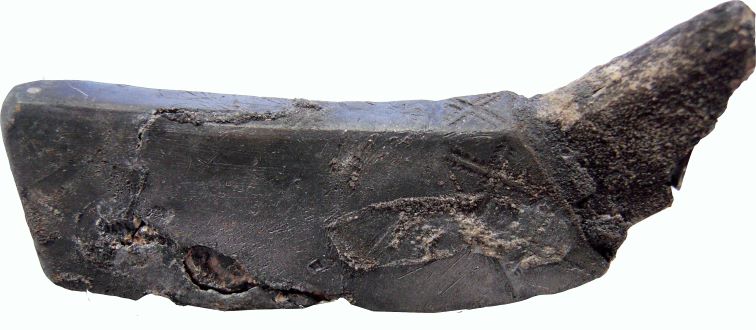Biddinghuizer colfship
In the 15th to the 17th century, the wooden colf club at the bottom were weighted with a metal “slipper”. The carton could be poured from lead or from a mixture of lead and tin.
More luxurious slippers were struck from a copper alloy. This weighting kept pace with the development of the harder filled leather balls. One could now hit harder, which increased the striking distance and therefore also the playing field.
Each player not only had his own colf stick, often made recognizable with colored windings and marks. The slippers were often provided with marks on the convex side such as crosses, lilies, stars, lines or zigzag edges. Brands of maker and the city where the sip was made have also been found.
There are two types of slippers. In the 16th century the upper surface was curved, while in the 17th century a triangular cross-section was seen.
All slippers have a flat bottom with a slightly curved back and a triangular point with a slightly curved nose. The impact side is flat and the other side is curved.
Also read the article in De Nederlandse Golfkrant about the subject in question:
Golfkrant 38. Juni 2021 Biddinghuizer Colfschip


